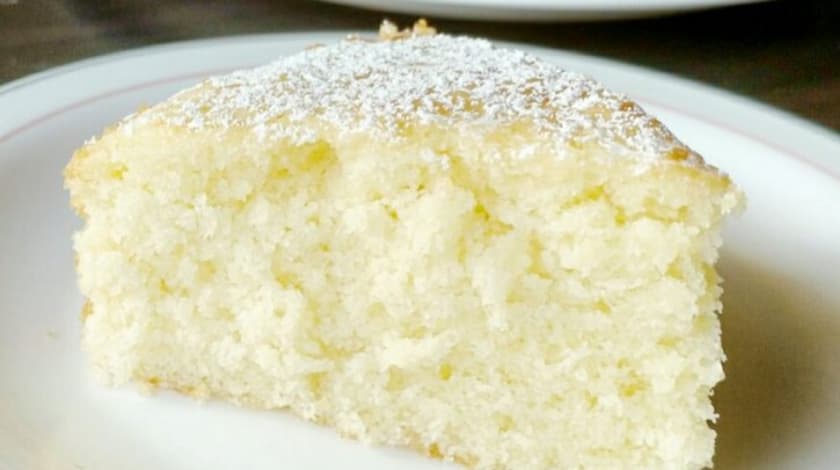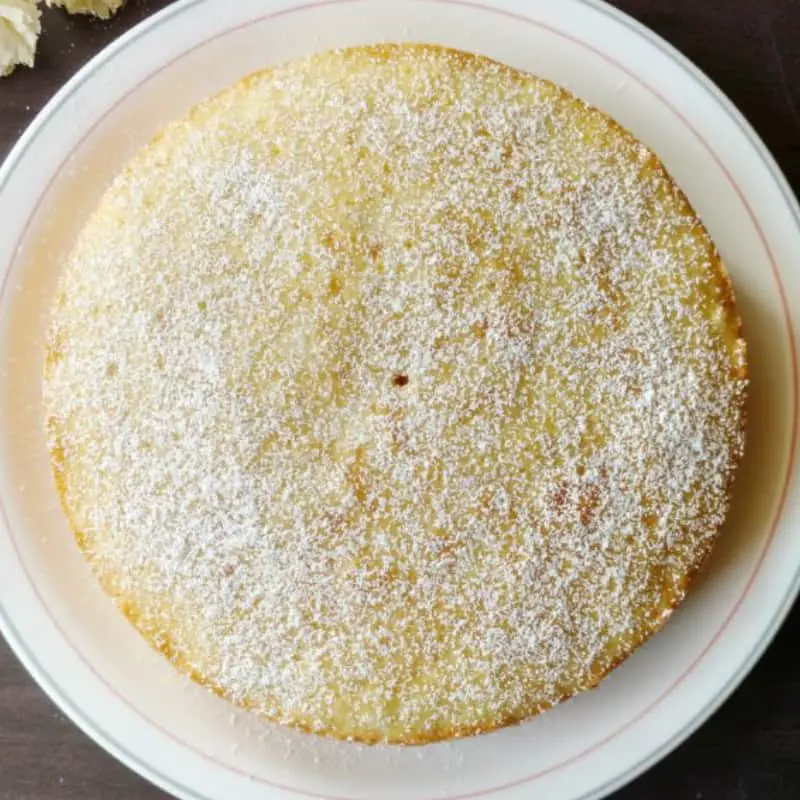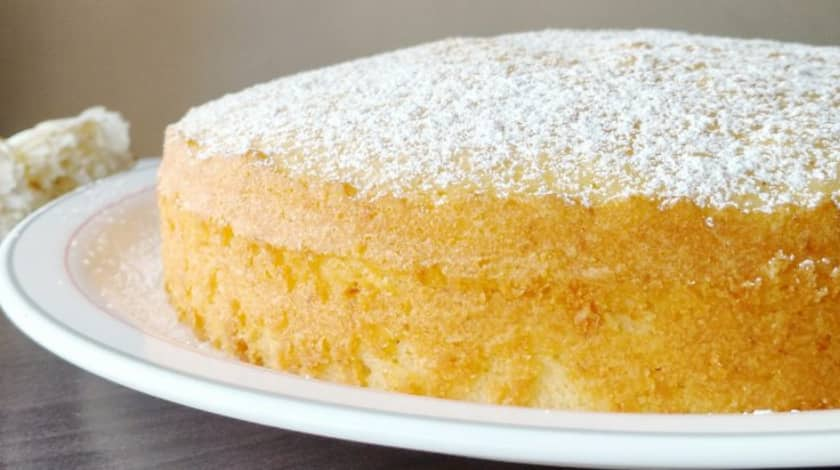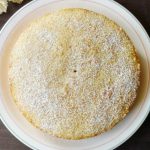If you’re looking for a delightful cake that’s both light and flavorful, Mary Berry’s Coconut Cake is the perfect choice. This cake combines the subtle sweetness of coconut with a moist, tender crumb, making it a treat for any occasion. With its simple yet elegant flavor profile, this coconut cake is ideal for afternoon tea, special celebrations, or just a sweet indulgence.
Mary Berry’s touch ensures that this recipe is easy to follow and yields consistently delicious results, making it a must-try for coconut lovers and baking enthusiasts alike.
What Is Mary Berry Coconut Cake?
Mary Berry Coconut Cake is a classic British dessert featuring a light and fluffy sponge cake infused with coconut. The cake is often topped with a coconut-flavored frosting and an extra sprinkle of desiccated coconut, making it a treat for those who enjoy the tropical taste of coconut.

Other Popular Cake Recipes
Why You Should Try This Recipe
- Coconut Lover’s Delight: Packed with coconut flavor, this cake is perfect for those who love tropical desserts.
- Moist and Fluffy Texture: The cake has a tender crumb that stays moist thanks to the coconut milk.
- Beautiful Presentation: Topped with coconut flakes or desiccated coconut, it’s a visually appealing dessert.
- Simple Ingredients: Uses basic pantry staples that are easy to find.
- Versatile Treat: Ideal for afternoon tea, birthdays, or any special occasion.
Ingredients Needed to Make Mary Berry Coconut Cake
For the Cake:
- 225g (8 oz) self-raising flour: Provides structure and lift to the cake.
- 225g (8 oz) caster sugar: Sweetens the cake and creates a tender crumb.
- 225g (8 oz) unsalted butter, softened: Adds richness and moisture to the cake.
- 4 large eggs: Bind the ingredients together and help the cake rise.
- 50g (1.8 oz) desiccated coconut: Infuse the cake with coconut flavor.
- 2 tsp baking powder: Ensures the cake rises well.
- 150ml (5 fl oz) coconut milk: Adds moisture and enhances the coconut flavor.
- 1 tsp vanilla extract: Adds a subtle vanilla flavor that complements the coconut.
For the Frosting:
- 200g (7 oz) cream cheese, softened: Creates a rich and creamy frosting.
- 100g (3.5 oz) unsalted butter, softened: Adds richness to the frosting.
- 300g (10.5 oz) icing sugar, sifted: Sweetens the frosting and adds thickness.
- 2 tbsp coconut milk: Adds coconut flavor and helps achieve the desired consistency.
- 50g (1.8 oz) desiccated coconut: For sprinkling on top of the frosted cake.
Equipment
- Two 8-inch round cake tins
- Mixing bowls
- Electric mixer or whisk
- Spatula
- Cooling rack
- Offset spatula (for frosting)
Instructions to Make Mary Berry Coconut Cake
For the Cake:
- Preheat the Oven: Preheat your oven to 180°C (350°F). Grease and line two 8-inch round cake tins with parchment paper.
- Mix the Cake Batter: In a large mixing bowl, beat the softened butter and caster sugar together until light and fluffy. Add the eggs one at a time, beating well after each addition. Stir in the vanilla extract.
- Combine Dry Ingredients: Sift the self-raising flour and baking powder together, then fold into the wet mixture until fully combined.
- Add Coconut and Milk: Stir in the desiccated coconut and coconut milk until the batter is smooth and well-mixed.
- Divide the Batter: Divide the cake batter evenly between the two prepared cake tins, smoothing the tops with a spatula.
- Bake the Cakes: Place the cake tins in the preheated oven and bake for 25-30 minutes, or until the cakes are golden brown and a skewer inserted into the center comes out clean.
- Cool the Cakes: Allow the cakes to cool in the tins for 10 minutes, then turn them out onto a cooling rack to cool completely.
For the Frosting:
- Make the Frosting: In a mixing bowl, beat the softened cream cheese and butter together until smooth and creamy. Gradually add the sifted icing sugar, mixing until well combined. Stir in the coconut milk to achieve a smooth, spreadable consistency.
- Frost the Cake: Once the cakes are completely cool, place one cake layer on a serving plate and spread a layer of frosting on top. Place the second cake layer on top and spread the remaining frosting over the top and sides of the cake.
- Add the Coconut Topping: Sprinkle the desiccated coconut over the top of the frosted cake, pressing it gently into the frosting to help it adhere.

What Goes Well With Mary Berry Coconut Cake
- Fresh Fruit: Serve with fresh tropical fruits like mango, pineapple, or kiwi to complement the coconut flavor and add a refreshing contrast.
- Whipped Cream: A dollop of lightly sweetened whipped cream enhances the cake’s richness without overpowering the delicate coconut flavor.
- Vanilla Ice Cream: The creamy, cold texture of vanilla ice cream pairs beautifully with the moist and fluffy coconut cake, making for a delightful dessert experience.
- Coconut Sorbet: For an extra burst of coconut flavor, serve the cake with a scoop of coconut sorbet. The icy, refreshing sorbet contrasts nicely with the cake’s softness.
- Lemon Curd: A drizzle of lemon curd adds a tangy contrast to the sweet, rich coconut, creating a balanced and zesty finish.
- Coffee or Tea: The subtle bitterness of coffee or the delicate flavor of tea pairs perfectly with the sweetness of the coconut cake, making it a great choice for afternoon tea or dessert.

Expert Tips for Making the Best Mary Berry Coconut Cake
- Use Full-Fat Coconut Milk: Full-fat coconut milk adds a richer flavor and moisture to the cake. Avoid using light coconut milk, which may result in a less moist cake.
- Room Temperature Ingredients: Ensure all your ingredients, especially butter, eggs, and coconut milk, are at room temperature before you start mixing. This helps create a smoother batter and a more even bake.
- Measure Flour Correctly: To avoid a dense cake, be sure to measure your flour accurately. Use the spoon-and-level method to measure flour rather than scooping it directly from the bag, which can lead to excess flour.
- Fold Gently: When adding the dry ingredients to the wet ingredients, fold them in gently. Overmixing can result in a dense, tough cake. The goal is to maintain a light, airy texture.
- Test for Doneness: Use a skewer or toothpick to test if the cake is done. Insert it into the center of the cake, and if it comes out clean or with a few crumbs, the cake is ready. If there is still wet batter on the skewer, bake the cake for a few more minutes.
- Cool Completely Before Frosting: Ensure the cakes are completely cool before you start frosting. If the cakes are even slightly warm, the frosting can melt and slide off.
- Customize the Topping: For an extra touch, toast the desiccated coconut before sprinkling it on top of the cake. This adds a lovely golden color and a deeper, nuttier flavor.
Easy Variations of Mary Berry Coconut Cake
- Lemon Coconut Cake: Add lemon zest to the batter and a splash of lemon juice to the frosting for a citrusy twist.
- Chocolate Coconut Cake: Add cocoa powder to the batter for a chocolatey version of this coconut cake.
- Almond Coconut Cake: Substitute some of the flour with almond flour and add almond extract for a nutty variation.
- Coconut and Pineapple Cake: Mix crushed pineapple into the batter for a tropical coconut-pineapple combination.
Best Practices to Store Mary Berry Coconut Cake
- Store at Room Temperature: If you plan to eat the cake within 1-2 days, you can store it at room temperature. Keep it covered with a cake dome or in an airtight container.
- Refrigerate for Longer Storage: For longer storage, place the cake in the refrigerator. Wrap it tightly with plastic wrap or store it in an airtight container. This will keep the cake fresh for up to 5 days.
- Freeze for Extended Storage: If you need to store the cake for more than a few days, consider freezing it. Wrap the cake tightly in plastic wrap, then in aluminum foil to prevent freezer burn. The cake can be frozen for up to 3 months. Thaw the cake in the refrigerator overnight before serving.
- Serve at Room Temperature: If refrigerated or frozen, allow the cake to come to room temperature before serving to enjoy its full flavor and texture.
Best Practices to Reheat Mary Berry Coconut Cake
- Reheat in the Oven: To gently warm the coconut cake, preheat your oven to 150°C (300°F). Place the cake or individual slices on a baking sheet and cover with aluminum foil to prevent drying out. Heat for 10-15 minutes, or until warmed through.
- Microwave for Quick Reheat: If you prefer a faster method, reheat individual slices in the microwave. Place a slice on a microwave-safe plate and heat on medium power for 15-20 seconds. Be careful not to overheat, as the frosting can melt and the cake may become too soft.
- Serve Warm or Room Temperature: Mary Berry Coconut Cake can be enjoyed warm, which enhances its moist texture and rich flavor, or at room temperature. If the cake has been refrigerated, allow it to sit at room temperature for about 30 minutes before serving.
- Avoid Overheating: Whether using the oven or microwave, reheat the cake just until it’s warmed through. Overheating can dry out the cake and cause the frosting to lose its texture.
Nutrition Value (per serving)
- Calories: 450
- Protein: 5g
- Carbohydrates: 55g
- Fat: 24g
- Fiber: 2g
- Sugar: 40g
How Can I Make Mary Berry Coconut Cake Healthier?
- Use Whole Wheat Flour: Substitute half of the self-raising flour with whole wheat flour for added fiber.
- Reduce Sugar: Cut back on the sugar in the cake batter or use a natural sweetener like honey or maple syrup.
- Use Low-Fat Butter: Opt for a low-fat butter alternative to reduce the overall fat content.
- Add Fresh Fruit: Serve the cake with fresh fruit like berries or sliced tropical fruits to add nutrients and natural sweetness.
FAQs
Can I use coconut cream instead of coconut milk in Mary Berry Coconut Cake?
Yes, you can use coconut cream instead of coconut milk in Mary Berry Coconut Cake. Coconut cream is thicker and richer, so it will make the cake slightly more dense and rich. If you prefer a lighter texture, you may want to dilute the coconut cream with a little water to match the consistency of coconut milk.
How do I keep Mary Berry Coconut Cake moist?
To keep Mary Berry Coconut Cake moist, make sure not to overbake it. Check for doneness with a skewer or toothpick, and remove the cake from the oven as soon as it comes out clean. Additionally, using full-fat coconut milk in the batter helps retain moisture. Storing the cake in an airtight container at room temperature or in the fridge will also help keep it moist.
Can I make Mary Berry Coconut Cake gluten-free?
Yes, you can make Mary Berry Coconut Cake gluten-free by substituting the self-raising flour with a gluten-free self-raising flour blend. Ensure the blend you use contains a binding agent like xanthan gum to maintain the cake’s structure. The rest of the ingredients can remain the same.
How long does Mary Berry Coconut Cake last?
Mary Berry Coconut Cake will last up to 2 days at room temperature if stored in an airtight container. For longer storage, refrigerate the cake, where it can stay fresh for up to 5 days. You can also freeze the cake for up to 3 months; just wrap it tightly in plastic wrap and aluminum foil before freezing.
Why is my coconut cake dense?
A coconut cake can become dense if the batter is overmixed, which can develop too much gluten and lead to a heavier texture. Additionally, using too much flour or not enough leavening agents, like baking powder, can also result in a dense cake. Ensuring that your ingredients, especially butter and eggs, are at room temperature can help create a lighter batter.
How to put shredded coconut on the side of the cake?
To put shredded coconut on the side of a cake, first, apply a generous layer of frosting to the sides. Then, take a handful of shredded coconut and gently press it into the frosting. Rotate the cake as you go to cover all sides evenly. Using a piece of parchment paper to catch any excess coconut can make the process less messy.
Why did my coconut cake sink?
A coconut cake may sink in the middle if the batter is underbaked, or if the oven door is opened too early during baking, causing a sudden drop in temperature. Other reasons include overmixing the batter or using too much baking powder, which can cause the cake to rise too quickly and then collapse.
What makes a cake dense and not fluffy?
A cake can become dense instead of fluffy if the batter is overmixed, which can overdevelop the gluten in the flour. Additionally, using too much flour or not enough leavening agents can prevent the cake from rising properly. Ensuring that your butter and sugar are creamed well to incorporate air and that the baking powder or baking soda is fresh will help achieve a fluffy texture.
Final Words
Mary Berry’s Coconut Cake is a delightful and versatile dessert that’s perfect for any occasion.
Try this classic recipe and enjoy a taste of tropical indulgence!
Other Popular Recipes
Print
Mary Berry Coconut Cake Recipe
- Prep Time: 20
- Cook Time: 25
- Total Time: 45 minutes
- Yield: 8 1x
- Category: Dessert
- Method: Baking
- Cuisine: British
Description
Mary Berry Coconut Cake is a classic British dessert featuring a light and fluffy sponge cake infused with coconut. The cake is often topped with a coconut-flavored frosting and an extra sprinkle of desiccated coconut, making it a treat for those who enjoy the tropical taste of coconut.
Ingredients
For the Cake:
- 225g (8 oz) self-raising flour: Provides structure and lift to the cake.
- 225g (8 oz) caster sugar: Sweetens the cake and creates a tender crumb.
- 225g (8 oz) unsalted butter, softened: Adds richness and moisture to the cake.
- 4 large eggs: Bind the ingredients together and help the cake rise.
- 50g (1.8 oz) desiccated coconut: Infuse the cake with coconut flavor.
- 2 tsp baking powder: Ensures the cake rises well.
- 150ml (5 fl oz) coconut milk: Adds moisture and enhances the coconut flavor.
- 1 tsp vanilla extract: Adds a subtle vanilla flavor that complements the coconut.
For the Frosting:
- 200g (7 oz) cream cheese, softened: Creates a rich and creamy frosting.
- 100g (3.5 oz) unsalted butter, softened: Adds richness to the frosting.
- 300g (10.5 oz) icing sugar, sifted: Sweetens the frosting and adds thickness.
- 2 tbsp coconut milk: Adds coconut flavor and helps achieve the desired consistency.
- 50g (1.8 oz) desiccated coconut: For sprinkling on top of the frosted cake.
Instructions
For the Cake:
- Preheat the Oven: Preheat your oven to 180°C (350°F). Grease and line two 8-inch round cake tins with parchment paper.
- Mix the Cake Batter: In a large mixing bowl, beat the softened butter and caster sugar together until light and fluffy. Add the eggs one at a time, beating well after each addition. Stir in the vanilla extract.
- Combine Dry Ingredients: Sift the self-raising flour and baking powder together, then fold into the wet mixture until fully combined.
- Add Coconut and Milk: Stir in the desiccated coconut and coconut milk until the batter is smooth and well-mixed.
- Divide the Batter: Divide the cake batter evenly between the two prepared cake tins, smoothing the tops with a spatula.
- Bake the Cakes: Place the cake tins in the preheated oven and bake for 25-30 minutes, or until the cakes are golden brown and a skewer inserted into the center comes out clean.
- Cool the Cakes: Allow the cakes to cool in the tins for 10 minutes, then turn them out onto a cooling rack to cool completely.
For the Frosting:
- Make the Frosting: In a mixing bowl, beat the softened cream cheese and butter together until smooth and creamy. Gradually add the sifted icing sugar, mixing until well combined. Stir in the coconut milk to achieve a smooth, spreadable consistency.
- Frost the Cake: Once the cakes are completely cool, place one cake layer on a serving plate and spread a layer of frosting on top. Place the second cake layer on top and spread the remaining frosting over the top and sides of the cake.
- Add the Coconut Topping: Sprinkle the desiccated coconut over the top of the frosted cake, pressing it gently into the frosting to help it adhere.



